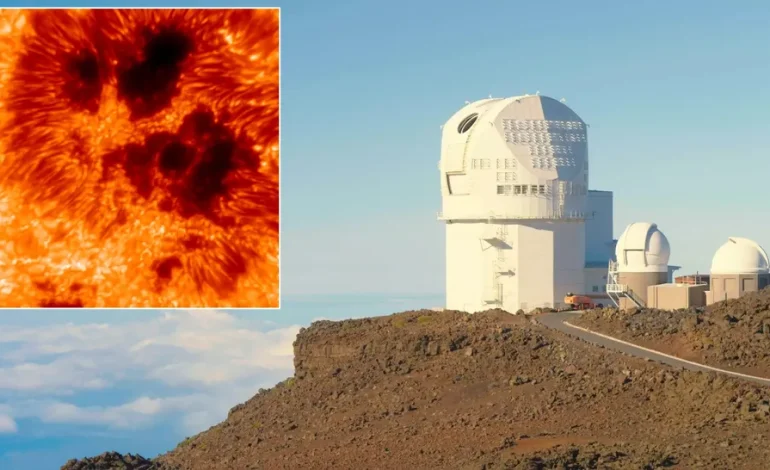The Daniel K. Inouye Solar Telescope, the world’s largest observatory dedicated to studying the sun, has received a major upgrade with the addition of a cutting-edge instrument designed to deliver some of the most detailed observations of our star ever recorded, Space.com reports.
Perched atop Haleakalā volcano on the Hawaiian island of Maui, the Inouye Solar Telescope has been a key tool in the study of solar dynamics since its construction, offering high-resolution views of the sun’s surface and magnetic field. Funded by the US National Science Foundation, the telescope aims to deepen understanding of solar phenomena, including eruptions and magnetic interactions that influence space weather.
The telescope’s newest enhancement is the Visible Tunable Filtergraph (VTF), an instrument described by scientists as the “heart” of the observatory. The VTF was developed over a span of 15 years by the Institute for Solar Physics in Germany and was recently installed at the facility. Even in its early testing phase, it is already producing impressively detailed solar images.
“The instrument is, so to speak, the heart of the solar telescope, which is now finally beating at its final destination,” said Matthias Schubert, project scientist for the instrument.
The VTF enables scientists to study the sun’s photosphere—the visible surface—and the chromosphere, the layer just above it, with greater precision than any previous ground-based instrument. It uses two advanced interferometers to analyze sunlight, functioning as a precise filter that breaks down the sun’s light into fine spectral components. This allows researchers to capture hundreds of high-quality images per second, offering a clearer picture of the sun’s complex structure and activity.
A recent image captured by the VTF shows the intricate structure within a large sunspot, with each pixel representing just 10 kilometers (6.2 miles) on the sun’s surface. This level of resolution is expected to improve even further as image processing techniques are refined during ongoing operations.
Sami Solanki, director of the Max Planck Institute for Solar System Research, noted:
“VTF enables images of unprecedented quality and thus heralds a new era in ground-based solar observation.”
The data collected by VTF will help scientists better understand how magnetic fields and hot plasma interact to drive solar eruptions—events that can have significant effects on Earth’s atmosphere and space-based technologies.
The Inouye Solar Telescope is designed to operate for 44 years, allowing it to observe multiple solar cycles, which last approximately 11 years each. Over this time, scientists anticipate that the telescope’s suite of instruments will continue to evolve, further enhancing its capabilities.
David Boboltz, associate director for the telescope, previously described the observatory’s adaptability as one of its strengths:
“The real power in the Inouye Solar Telescope is its flexibility, its upgradability. It’s like having a Swiss Army Knife to study the sun.”










The latest news in your social feeds
Subscribe to our social media platforms to stay tuned